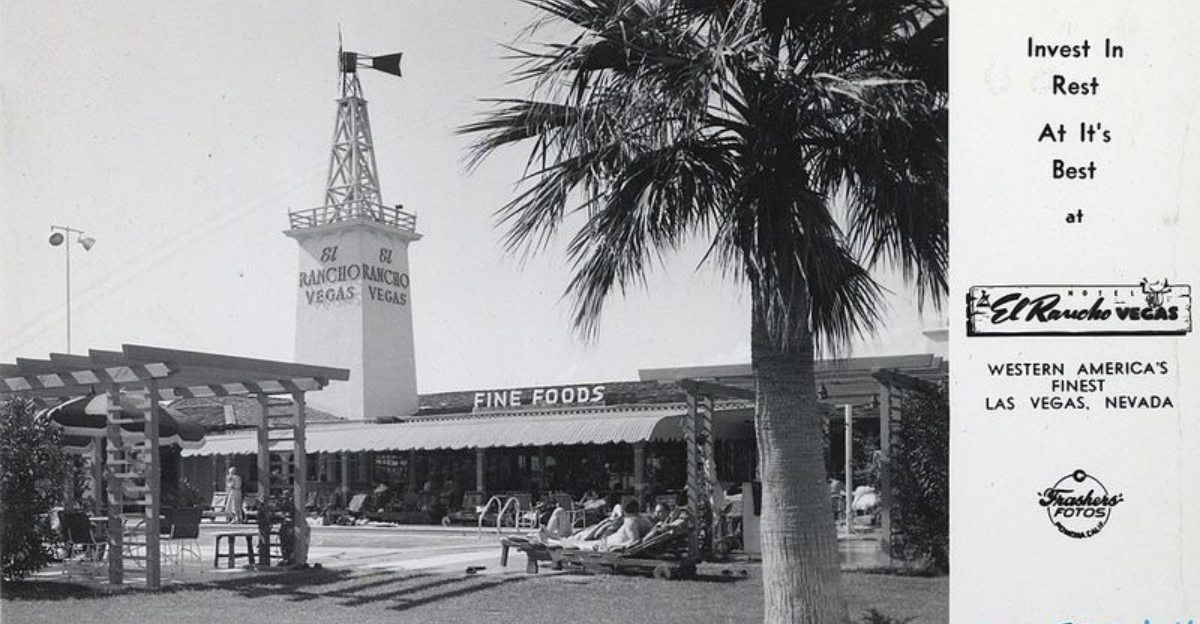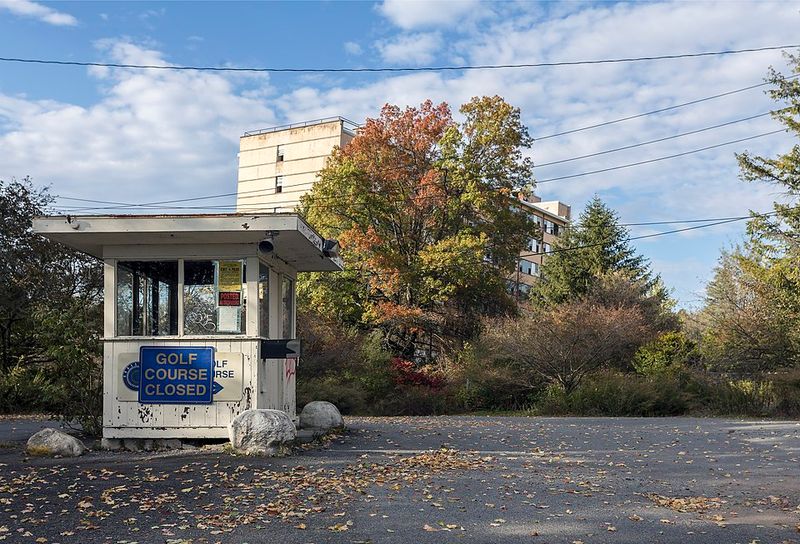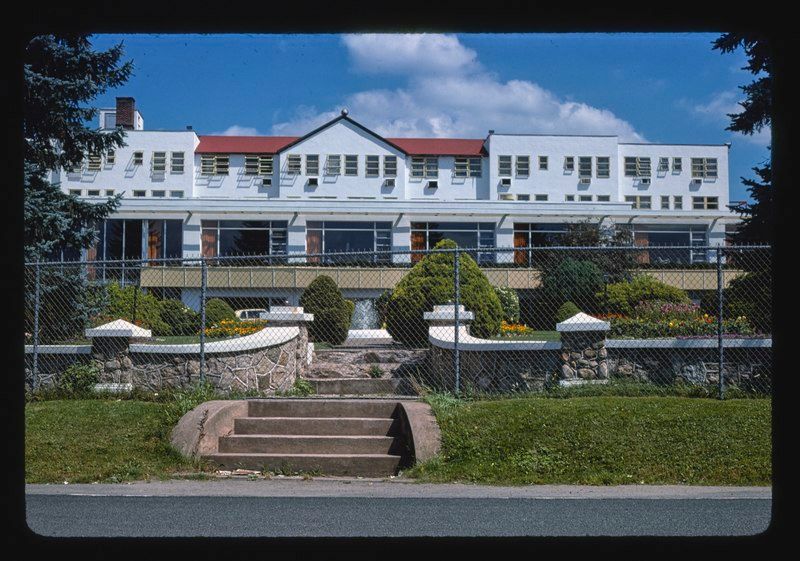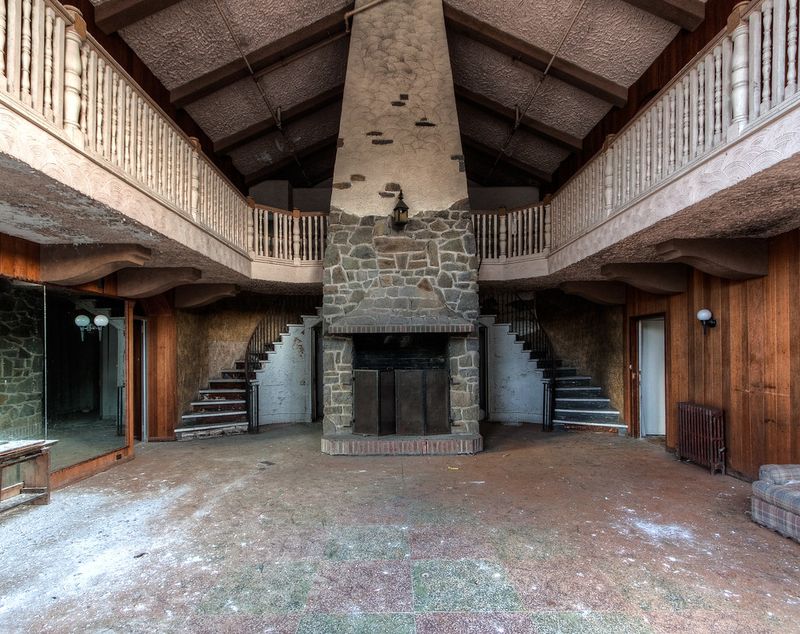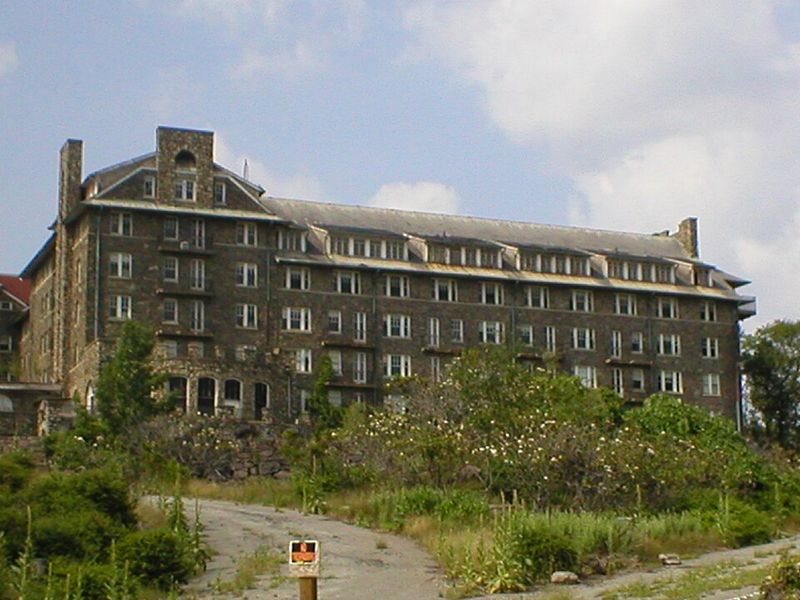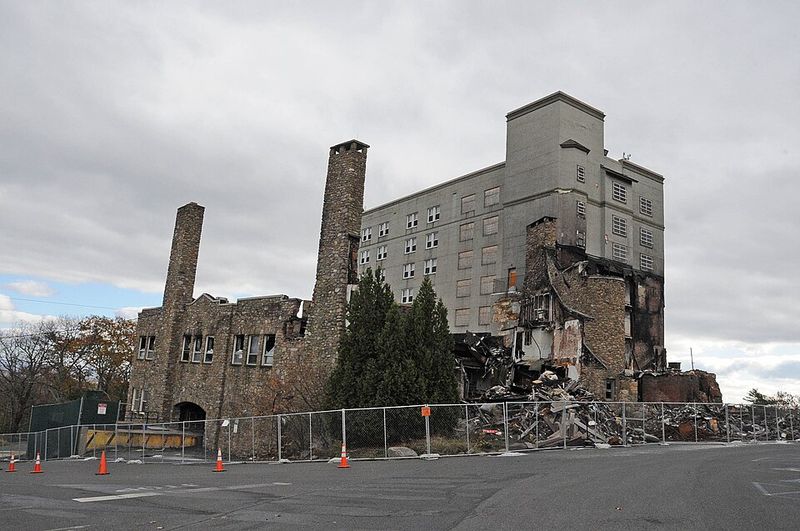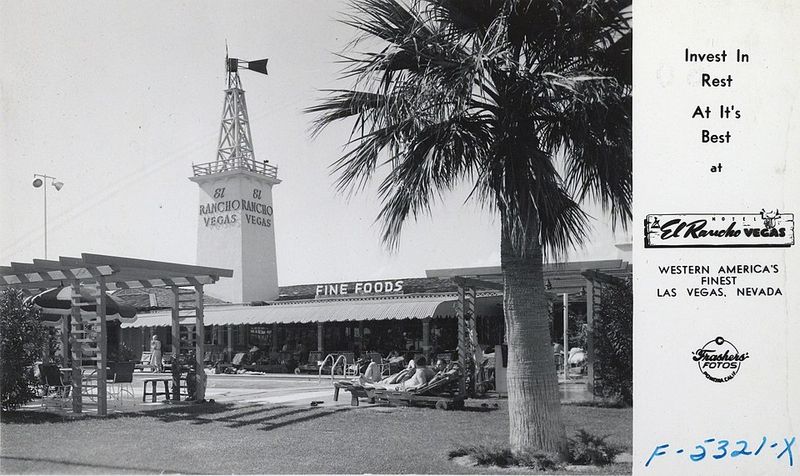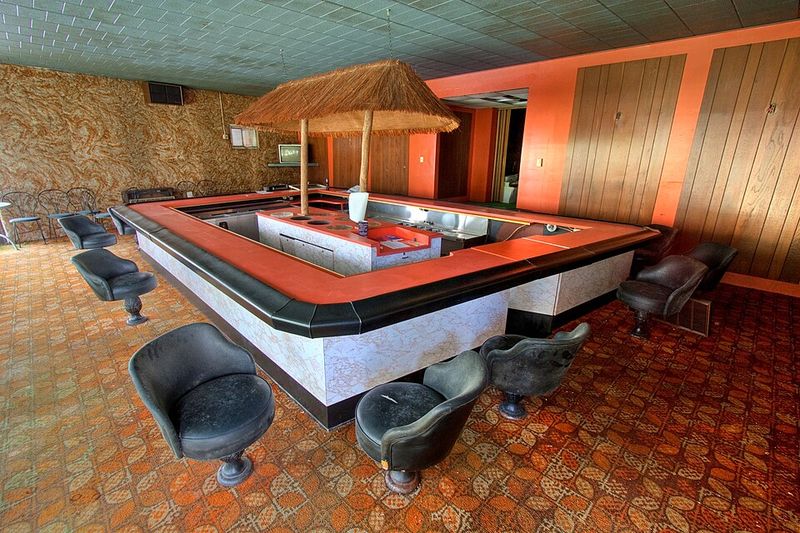Once the stage for honeymoons, Hollywood sightings, and summer bliss, these resorts now lie quiet—time capsules sealed by shifting tastes and travel trends. Peek behind the vines and peeling paint to discover the stories of glamour, ambition, and heartbreak etched into their walls. From Catskills icons to desert mirages, each ruin whispers about the golden age of American leisure. Ready to wander the halls where history still lingers?
Grossinger’s Catskill Resort, New York
Once crowned the Queen of the Catskills, Grossinger’s embodied mid-century American leisure. Founded in 1919, the resort ballooned into a sprawling complex boasting a golf course, an Olympic pool, ski runs, and even a private airstrip. Stars like Elizabeth Taylor, Eddie Fisher, and Milton Berle mingled with middle-class families, and legend ties its spirit to Dirty Dancing. But jets and package vacations shifted attention south and west. The resort closed in 1986, decaying into a photogenic labyrinth of mossy lobbies and collapsing ballrooms. Demolished in 2018, Grossinger’s survives in postcards, anecdotes, and the cultural memory of the Borscht Belt’s shimmering heyday.
The Pines Resort, New York
In the Catskills’ Borscht Belt, The Pines pulsed with summer spectacle—stand-up comics, big-band dances, and bustling pools framed by evergreen ridges. Families flocked there through the 1950s and ’60s, embracing a carefree, all-inclusive rhythm of meals, sports, and shows. Then inexpensive flights to sun-sure beaches disrupted the pilgrimage. Ownership churn followed, and the resort shuttered in the 1990s. Today, moss quilts the tennis courts, chandeliers corrode in empty ballrooms, and wind rehearses old laughter down crumbling corridors. The Pines is a memory palace for a vanished regional tourism economy, its faded marquees hinting at punchlines and polkas now lost to time.
The Nevele Grande Hotel, New York
The Nevele Grande fused early 20th-century hospitality with a futuristic tower poised above rolling Catskills. Guests skated an indoor rink, honeymooned in sleek suites, and carved nearby ski slopes before evening shows. As America’s travel map redrew itself, reinvention lagged. By 2009, after stalled modernization and speculative plans, the resort went dark. Grand lobbies gathered glass and silence; wind threaded through broken panes like a melancholy emcee. Proposals for casino revival flicker and fade, leaving the Nevele as a striking relic of optimism—its geometry and ghosts recalling the era when one property promised everything from snow days to nightclub sparkle.
Buck Hill Inn, Pennsylvania
Perched in the Poconos, Buck Hill Inn once unfolded like a storybook—Tudor gables, sweeping verandas, and ballrooms humming with seasonal rituals. Opening in 1901, it welcomed generations seeking mountain breezes, golf, and candlelit dinners. The late 20th century brought thinner margins and competition, and by the 1980s, the music faded. The vast structure became a magnet for urban explorers and ghost lore, its empty halls steeped in creaks and folklore. Attempts to reawaken the property repeatedly stalled against scale and cost. Today, Buck Hill Inn stands as a romantic ruin, its silhouette a bittersweet monument to the Poconos’ gilded hospitality age.
Poconos Manor, Pennsylvania
Known as the Grand Lady of the Mountains, Poconos Manor began as a Quaker retreat in 1902 and evolved into a full-fledged four-season resort. Guests savored panoramic vistas, golf rounds, sleigh rides, and fireside evenings. More than a century later, a devastating 2019 fire closed the chapter, leaving scorched beams and stonework as elegies. Redevelopment proposals surface periodically, but the original hotel’s gracious verandas and nostalgic charm persist mainly in memory. Walking the site, you can almost hear suitcase wheels across wood floors and the soft clink of teacups—echoes of a mountain institution that defined regional elegance for generations.
El Rancho Vegas, Nevada
El Rancho Vegas ignited the Las Vegas Strip in 1941 with Western swagger—neon, roulette wheels, and showgirls beneath a ranch-style roofline. It set the template for destination glamour long before megaresorts rose in chrome and glass. Celebrities packed the showroom, and the casino floor glowed with possibility. A devastating 1960 fire ended its run, and the property was never rebuilt. Today, it’s a mirage in the Strip’s origin story, overshadowed by towering neighbors. Yet its DNA threads through modern Vegas—a reminder that a wooden ranch with bright lights taught the desert how to sparkle.
The Salton Sea Beach Club, California
In the 1950s, the Salton Sea glittered as California’s inland Riviera—speedboats, tiki bars, and crooners against pink sunsets. The Beach Club drew celebrities and weekenders to marinas and dance floors. Then nature and mismanagement intervened: salinity spiked, fish die-offs fouled the air, and visitors vanished by the 1970s. What remains is a dream bleached by sun and salt—rusted yacht skeletons, vandalized lounges, and signs pointing nowhere. The desolation is cinematic and unsettling, a portrait of ambition colliding with ecology. Even so, artists and photographers still come, chasing the melancholic beauty of paradise undone.
Tamarack Lodge, New York
Tamarack Lodge once encapsulated the Catskills recipe—lakeside afternoons, lively supper clubs, and a social calendar stacked with music and comedy. Families returned annually, weaving traditions within pine-scented air. As the Borscht Belt faded in the 1980s, Tamarack closed and suffered fires, scrapping, and vandalism. Today, graffiti murals and charred beams interlace with ferns reclaiming the dance floors. The site’s silence hums with ghostly orchestras and poolside chatter. Tamarack endures as a melancholic landmark, mapping how regional resort cultures rise, crest, and subside—leaving stories on the shorelines of emptied lakes and cracked terrazzo.
Penn Hills Resort, Pennsylvania
Billing itself as the Honeymoon Capital, Penn Hills perfected kitsch romance: heart-shaped tubs, round beds, and champagne glasses big enough to bathe in. Opened in the 1940s, it leaned into Poconos fantasy with rose carpets and neon script. After its founder died in 2009, debts mounted and doors locked. Vines threaded through velvet; snow collapsed roofs; a pink dream curdled to sepia. Yet the iconography endures in postcards and pop culture—equal parts camp and tenderness. Penn Hills is a love letter left in the rain, the ink still legible if you look closely.
